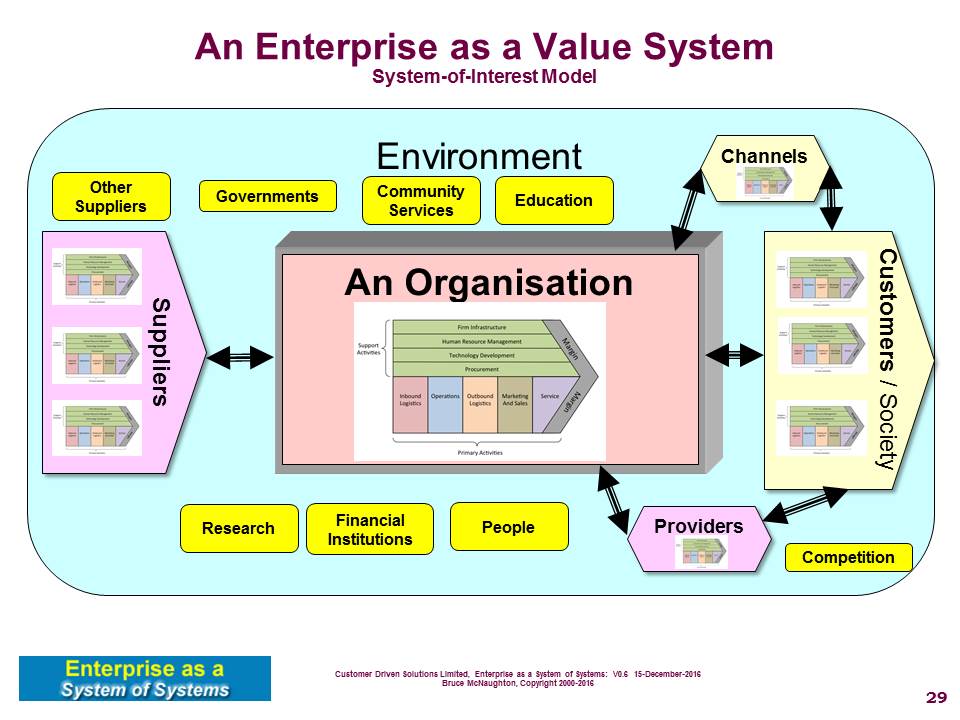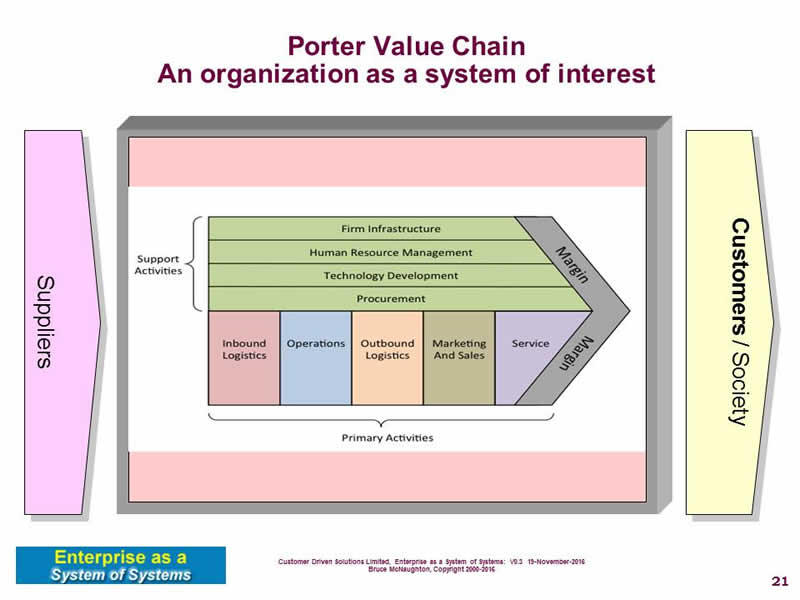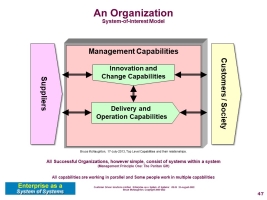Name: Value Chain
Based on: Organization
The Value Chain is a model of an organization proposed by Michael Porter in his book Competitive Advantage.
The value chain identifies all of the capabilities necessary to deliver the purpose of the organization.
The Value Chain is a model of an organization. The purpose in this section is the purpose of the organization.
See the System Description of an Organization for information for this section:
Systemic Measurable Variables
See the System Description of an Organization for information for this section:
Systemic Capabilities or Functions
The value chain model highlights the capabilities needed within an organization. This is a classic model of an organization that can be adapted to any organization. The three top level capabilities are shown in the following picture:
System States
See the System Description of an Organization for information for this section:
See the System Description of an Organization for information for this section:
An organization takes an organizational role in the Enterprise (SoS). This role determines the contribution to the enterprise objectives as a whole. The Organization is a system element (constituent system) of the Enterprise (SoS). The Enterprise provides part of the environment for the organization. This is shown in the following picture:

The environment includes the following items that can impact the capabilities and performance of the Organization:
- Competition
- Government
- Physical Environment
- Local communities
- Transportation
- etc.
The Structure of the Organization as a system is described below:
The Porter Value Chain in full detail is shown below:

The technology systems are considered the 'white box' where the technology needs to be created or tailored in order to support the organization to achieve its purpose or objectives. The change or enabling system provides the means to create or tailor the technology. The relationship between the management system and the technology systems is shown below:
Configuration / Scenario:
Describes any configuration / scenario attributes for a specific system-of-interest. This may not be appropriate for all system descriptions (e.g. patterns or abstract systems).
Cyclical (Repeating / Regular) Processes
The organization is created, used, or released in an organization using the Team Performance Management process using the organizing activity of a manager. Additional capabilities create the environment for the organization as a whole to deliver its purpose. The Top Management Team manages the creation, use and release of the whole organization rather than a specific team..
Development Life Cycle Processes
The organization as a whole creates, uses and releases any of the capabilities necessary to design, change or enhance the capabilities of the organization. This set of change processes forms the enabling systems necessary to create the operational capabilities for the normal operations of the organization. Feedback from the performance of the organization is used to make both minor and major changes to the organizations. The overall investment and priorities of the organization guide the portfolio of change and the roadmap.
The following references support this type of system-of-interest.
